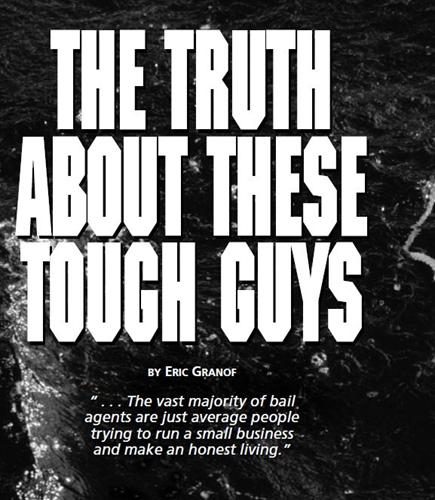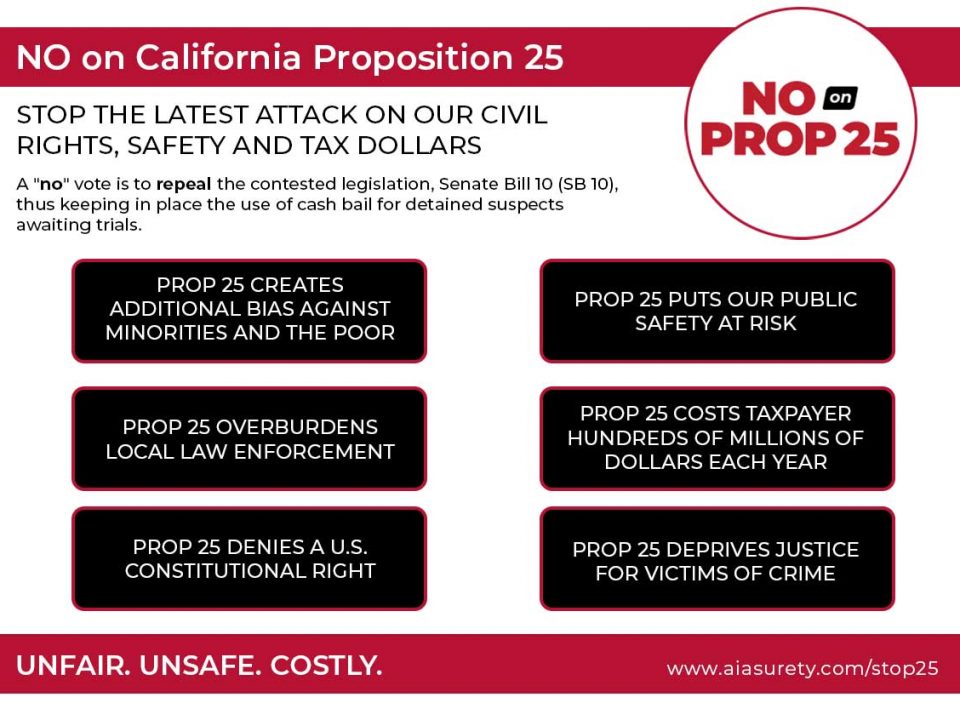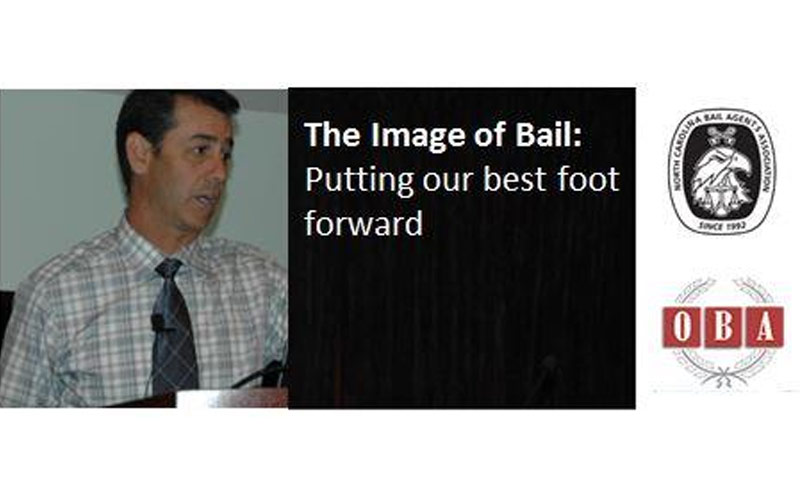- Need a bail bond?
- (800) 938-2245
- [email protected]
The Truth About the Bail Bond Profession: What Everyone Should Know
THE NATION'S LARGEST BAIL BOND NETWORK
(800) 938-2245

FIND A LOCAL BAIL BOND AGENT NOW
The ExpertBail Network is comprised of the industry’s best, most experienced and most trusted bail bond agents.
- Nationwide bail bonds. Anywhere. Anytime.
- Largest network of local bail agents in every state bail can be written.
- Raising the standards in the bail industry.
- Fast and Reliable.
- Se Habla Español.

The biggest challenge that the bail bond profession faces in today’s marketplace is the extreme lack of understanding of the industry amongst the general public. Couple this lack of understanding with the massive misperception and negative image of the industry, which has been created by the media and you can begin to see the magnitude of this challenge.
Adding to it all has been the onset of reality television, which has had the unfortunate effect of blurring the lines between the bail bond profession and the fugitive recovery (bounty hunting) profession. The true reality of these professions is that they are very different. While some bail agents do act as fugitive recovery agents, the majority of them are not and never require the use of one. Why? Because they run their business with professionalism and care and understand how to correctly underwrite the risk associated with a bail bond. Now please don’t miss understand. Fugitive recovery agents do play an important role in the bail bond process and are a valuable component of what makes the bail process so effective. It is just important to understand the difference between the two and essential roles that each plays in the process.
In a recent article published in USA Today Magazine, Eric Granof, Chief Marketing Officer for the AIA Family of Companies, tries to set the record straight on the reality of the bail bond industry and those hard working individuals and families that make it their profession.
The Truth About these Tough Guys
by Eric Granof
“The vast majority of bail agents are just average people trying to run a small business and make an honest living.”
When most people think of bail bonds, they immediately imagine dark alley thugs and large, rough men wearing fedoras and smoking cigars. While not a glamorous image, it is one that has been sold to the public for decades. From Hollywood directors to the news media, the bail profession has been positioned in such a negative light that the only way the average person can tell the difference between a bail agent and a criminal is by what side of the bars each is on. What most people do not realize is this negative portrayal of the bail profession could not be further from the truth.
The concept of bail goes back to English law and was brought to this country with the first settlers. In its simplest form, bail is an insurance policy guaranteeing that a person being released from custody while awaiting trial will show up for all court appearances until the case is adjudicated fully.
There are two main forms of pretrial release: secured and unsecured. The former involves the placement of a financial form of security to guarantee the defendant’s appearance, while unsecured merely promises that the defendant will appear. There are a few forms of secured release: cash bail (defendant posts full amount of bail), deposit bail (defendant pays the court a small percentage of the bond set), and surety bail (a private party guarantees appearance of the defendant in court, otherwise pays the court the full amount of the bail). Commercial surety bail, which is what we will focus on, uses an insurance company whose agents post a bond as security to guarantee a defendant’s appearance in court.
While bail is a simple concept at its core, it is a complicated process to understand fully because it is regulated so differently across the country. Currently, 46 states, along with Puerto Rico, allow commercial surety bail. (Kentucky, Oregon, Illinois, and Wisconsin utilize alternative forms of release.) These 46 states each regulate bail differently, not only at the state level, but at the county level as well.
In its broadest sense, bail works like this. When an individual is arrested for a crime, that person is booked into custody, and a background check is performed to make sure that individual does not have any outstanding warrants or is wanted by law enforcement elsewhere. If the background check is returned with no issues, bail is set by the court, usually by a magistrate or other official. The amount of the bond will depend on many factors, including the severity of the charge and previous history of the defendant, as well as other basic information on the current status of the defendant (job history, family situation, living arrangements, etc.). Based on these criteria, the bail amount is set and the defendant now has the ability to get out of jail while awaiting trial.
Why is this important? Imagine you are the person arrested. Maybe you were wrongly accused or just made one poor decision. How would you support your family or show up for work and keep your job or handle all of the responsibilities in your life if you were being held in jail? Bail allows people not only to keep their promise to the court, but to those around them. It also allows the defendant to prepare properly for a defense while awaiting trial. Additionally, it keeps costs associated with incarceration down so that taxpayer dollars can be better spent on housing those that pose a serious threat to the community.
Who are these people who have chosen bail as a profession? Are they the rough and tumble characters typically portrayed in movies and on television? Do they wear bulletproof vests and run through the streets with guns? The reality of the bail profession is far less dramatic than the image we see in the media. It certainly has its characters, but the vast majority of bail agents are just average people trying to run a small business and make an honest living.
In addition to misperceptions of the profession, what few understand is the role that bail bonds play in the criminal justice system. The connection admittedly is not obvious. In fact, it might be entirely logical to think of bail as a necessary evil—something that must be available by law, but which most of us wish did not exist at all. However, the truth is more complex than that. While bail serves to free individuals accused of crimes pending their trials, there also is the issue of public safety. In particular, the release back into society of a person accused of a violent crime usually raises the hackles of citizens. The constant concern is whether that individual offends again while free, or perhaps jumps bail—or, worse yet, both. This is where the situation becomes muddied and, despite public perceptions, perhaps the most important person helping to keep the community safe is the bail agent.
How can that be? To explain, let us refer back to our earlier description of how bail works using sample figures. For instance, when a bond is set, let us say for $10,000, the defendant has options. One choice is he or she can post the full amount of the bond with the court. This is the cash bond form of secured release. It is easy to see why this option is not very popular, since most individuals do not have the financial resources to come up with that much cash quickly.
The second option, one that is far more palatable for the common man on the street, is to post a bond through a bail bond agent. In this scenario, the defendant pays a nonrefundable fee—like an insurance policy premium—to the bail agent (typically 10%-15% of the bond amount) along with providing proof of assets or collateral equal to the full bond amount.
In the example of our $10,000 bond, the defendant — or his family members or friends — needs to come up with $1,000 to secure the defendant’s release, as opposed to coming up with the full $10,000. The bail agent enters into a contract with the defendant (and the family members/friends) who must co-sign on the bond, which states that the defendant, upon release, promises to make all court appearances until the court legally declares that the case has concluded.
If the defendant fails to make a single appearance, it is the bail agent’s responsibility to remand (the legal term for “return”) the defendant back into custody. However, if the defendant does not show up to court for any reason whatsoever and is not remanded, the bail agent becomes responsible for the full amount of the bond, which, in this case, is $10,000.
As one can well imagine, the motivation to ensure the appearance of any defendant is extremely important to a bail agents’ survival. Receiving $1,000 for a service and then having to pay $10,000 back if you do not do your job is strong motivation. Depending on the size of the bond, it only may take one or two bonds going bad to have a material impact on the agent’s business.
In addition, anyone who signs on a bond also is held accountable. In the case of a defendant who jumps bail, his family and friends face the very real possibility of having to pay the full amount of the bond to the bail agent, which in many cases may involve the deed to a car or house. The powerful financial incentive that is built into the bail system is what makes the bail bond industry so effective at what it does: getting defendants to show up for court.
A less effective form of pretrial release is “unsecured.” This does not include any sort of financial guarantee associated with a defendant’s release. It is based only on the promise of the defendant showing up for court. This form of release has major shortcomings. First, if one removes financial incentive from the equation, its effectiveness diminishes. The results speak for themselves. Based on studies conducted by the Bureau of Justice Statistics, unsecured release has a failure-to-appear rate of approximately 28%, compared to that of commercial surety bail, which is around four percent.
The second shortcoming is the incentive on the other side of the equation. The bail agent has a strong financial incentive to go after the defendant should that person not show up. If an individual is released with an unsecured bondissued through a government sponsored pretrial release program, there is no incentive for the employee of the government agency overseeing the program to ensure the appearance of the defendant. If the defendant fails to appear, the government employee will do little more than inform law enforcement and have a warrant issued. Government programs do not have the resources, experience, or incentive to find these individuals and therefore must rely on an already overworked police force to do the job. Understandably, law enforcement already has its plate full and these types of warrants typically just sit and accumulate over time.
Government sponsored programs offer none of the societal safeguards inherent to the bail bond process. They are touted as free but, because they are publicly funded, the actual cost is borne by taxpayers. Moreover, the checks and balances offered by bail are absent. Essentially, what happens with pretrial release is a judge will allow a defendant to go free on his or her own recognizance.
The public safety element of bail probably is the most misunderstood. When a bail agent does his job effectively, he ensures that a defendant accused of a crime against another will show up for court. When that defendant appears to stand trial, the victim of that crime is provided with the opportunity for justice. Moreover, in the relatively few instances where a defendant jumps bail, the bail agent legally is empowered to bring that individual back to face justice.
For the past year, the AIA Family of Insurance Companies, the nation’s largest bail bond underwriters, has been aligning itself and its national network of more than 5,000 bail agents, ExpertBail, with the National Center for Victims of Crime, the nation’s foremost resource and advocacy organization for crime victims. As part of our work together, we conducted a joint survey with bail agents and victim advocates to determine how often each group interacts with victims of crime. Bail agents have a much greater interaction with crime victims than most people think, with 86% of the bail agents indicating they interacted with a victim of crime in their bail office at least once a month.
These cases typically center on domestic violence, in which the person who was battered is bailing out the person who battered him or her. We found that many times during these interactions, bail agents were in unique positions to provide guidance and direction to the victims. This is where the role of a bail agent and a victim advocate intersect. In those instances, a bail agent is having an important interaction with an individual in close proximity to the time of victimization. Because of this, bail agents are in an ideal position to provide the victim with information and guidance as to the resources that are available. While they should not be thought of as counselors, bail agents do have the potential to help guide victims and their families.
Eric Granof is outreach director and Chief Marketing officer of the AIA (Allegheny Casualty, International Fidelity, and Associated Bond) Family of Companies/ExpertBail Network, Calabasas, California.
Image and original article published by USA Today Magazine, January 2012.

Bail Bonds and Jail Information for Phoenix, Arizona
January 31, 2012ExpertBail Agent Stephen Owens on the Air Talking Bail Bonds
January 31, 2012The Truth About the Bail Bond Profession: What Everyone Should Know

The biggest challenge that the bail bond profession faces in today’s marketplace is the extreme lack of understanding of the industry amongst the general public. Couple this lack of understanding with the massive misperception and negative image of the industry, which has been created by the media and you can begin to see the magnitude of this challenge.
Adding to it all has been the onset of reality television, which has had the unfortunate effect of blurring the lines between the bail bond profession and the fugitive recovery (bounty hunting) profession. The true reality of these professions is that they are very different. While some bail agents do act as fugitive recovery agents, the majority of them are not and never require the use of one. Why? Because they run their business with professionalism and care and understand how to correctly underwrite the risk associated with a bail bond. Now please don’t miss understand. Fugitive recovery agents do play an important role in the bail bond process and are a valuable component of what makes the bail process so effective. It is just important to understand the difference between the two and essential roles that each plays in the process.
In a recent article published in USA Today Magazine, Eric Granof, Chief Marketing Officer for the AIA Family of Companies, tries to set the record straight on the reality of the bail bond industry and those hard working individuals and families that make it their profession.
The Truth About these Tough Guys
by Eric Granof
“The vast majority of bail agents are just average people trying to run a small business and make an honest living.”
When most people think of bail bonds, they immediately imagine dark alley thugs and large, rough men wearing fedoras and smoking cigars. While not a glamorous image, it is one that has been sold to the public for decades. From Hollywood directors to the news media, the bail profession has been positioned in such a negative light that the only way the average person can tell the difference between a bail agent and a criminal is by what side of the bars each is on. What most people do not realize is this negative portrayal of the bail profession could not be further from the truth.
The concept of bail goes back to English law and was brought to this country with the first settlers. In its simplest form, bail is an insurance policy guaranteeing that a person being released from custody while awaiting trial will show up for all court appearances until the case is adjudicated fully.
There are two main forms of pretrial release: secured and unsecured. The former involves the placement of a financial form of security to guarantee the defendant’s appearance, while unsecured merely promises that the defendant will appear. There are a few forms of secured release: cash bail (defendant posts full amount of bail), deposit bail (defendant pays the court a small percentage of the bond set), and surety bail (a private party guarantees appearance of the defendant in court, otherwise pays the court the full amount of the bail). Commercial surety bail, which is what we will focus on, uses an insurance company whose agents post a bond as security to guarantee a defendant’s appearance in court.
While bail is a simple concept at its core, it is a complicated process to understand fully because it is regulated so differently across the country. Currently, 46 states, along with Puerto Rico, allow commercial surety bail. (Kentucky, Oregon, Illinois, and Wisconsin utilize alternative forms of release.) These 46 states each regulate bail differently, not only at the state level, but at the county level as well.
In its broadest sense, bail works like this. When an individual is arrested for a crime, that person is booked into custody, and a background check is performed to make sure that individual does not have any outstanding warrants or is wanted by law enforcement elsewhere. If the background check is returned with no issues, bail is set by the court, usually by a magistrate or other official. The amount of the bond will depend on many factors, including the severity of the charge and previous history of the defendant, as well as other basic information on the current status of the defendant (job history, family situation, living arrangements, etc.). Based on these criteria, the bail amount is set and the defendant now has the ability to get out of jail while awaiting trial.
Why is this important? Imagine you are the person arrested. Maybe you were wrongly accused or just made one poor decision. How would you support your family or show up for work and keep your job or handle all of the responsibilities in your life if you were being held in jail? Bail allows people not only to keep their promise to the court, but to those around them. It also allows the defendant to prepare properly for a defense while awaiting trial. Additionally, it keeps costs associated with incarceration down so that taxpayer dollars can be better spent on housing those that pose a serious threat to the community.
Who are these people who have chosen bail as a profession? Are they the rough and tumble characters typically portrayed in movies and on television? Do they wear bulletproof vests and run through the streets with guns? The reality of the bail profession is far less dramatic than the image we see in the media. It certainly has its characters, but the vast majority of bail agents are just average people trying to run a small business and make an honest living.
In addition to misperceptions of the profession, what few understand is the role that bail bonds play in the criminal justice system. The connection admittedly is not obvious. In fact, it might be entirely logical to think of bail as a necessary evil—something that must be available by law, but which most of us wish did not exist at all. However, the truth is more complex than that. While bail serves to free individuals accused of crimes pending their trials, there also is the issue of public safety. In particular, the release back into society of a person accused of a violent crime usually raises the hackles of citizens. The constant concern is whether that individual offends again while free, or perhaps jumps bail—or, worse yet, both. This is where the situation becomes muddied and, despite public perceptions, perhaps the most important person helping to keep the community safe is the bail agent.
How can that be? To explain, let us refer back to our earlier description of how bail works using sample figures. For instance, when a bond is set, let us say for $10,000, the defendant has options. One choice is he or she can post the full amount of the bond with the court. This is the cash bond form of secured release. It is easy to see why this option is not very popular, since most individuals do not have the financial resources to come up with that much cash quickly.
The second option, one that is far more palatable for the common man on the street, is to post a bond through a bail bond agent. In this scenario, the defendant pays a nonrefundable fee—like an insurance policy premium—to the bail agent (typically 10%-15% of the bond amount) along with providing proof of assets or collateral equal to the full bond amount.
In the example of our $10,000 bond, the defendant — or his family members or friends — needs to come up with $1,000 to secure the defendant’s release, as opposed to coming up with the full $10,000. The bail agent enters into a contract with the defendant (and the family members/friends) who must co-sign on the bond, which states that the defendant, upon release, promises to make all court appearances until the court legally declares that the case has concluded.
If the defendant fails to make a single appearance, it is the bail agent’s responsibility to remand (the legal term for “return”) the defendant back into custody. However, if the defendant does not show up to court for any reason whatsoever and is not remanded, the bail agent becomes responsible for the full amount of the bond, which, in this case, is $10,000.
As one can well imagine, the motivation to ensure the appearance of any defendant is extremely important to a bail agents’ survival. Receiving $1,000 for a service and then having to pay $10,000 back if you do not do your job is strong motivation. Depending on the size of the bond, it only may take one or two bonds going bad to have a material impact on the agent’s business.
In addition, anyone who signs on a bond also is held accountable. In the case of a defendant who jumps bail, his family and friends face the very real possibility of having to pay the full amount of the bond to the bail agent, which in many cases may involve the deed to a car or house. The powerful financial incentive that is built into the bail system is what makes the bail bond industry so effective at what it does: getting defendants to show up for court.
A less effective form of pretrial release is “unsecured.” This does not include any sort of financial guarantee associated with a defendant’s release. It is based only on the promise of the defendant showing up for court. This form of release has major shortcomings. First, if one removes financial incentive from the equation, its effectiveness diminishes. The results speak for themselves. Based on studies conducted by the Bureau of Justice Statistics, unsecured release has a failure-to-appear rate of approximately 28%, compared to that of commercial surety bail, which is around four percent.
The second shortcoming is the incentive on the other side of the equation. The bail agent has a strong financial incentive to go after the defendant should that person not show up. If an individual is released with an unsecured bondissued through a government sponsored pretrial release program, there is no incentive for the employee of the government agency overseeing the program to ensure the appearance of the defendant. If the defendant fails to appear, the government employee will do little more than inform law enforcement and have a warrant issued. Government programs do not have the resources, experience, or incentive to find these individuals and therefore must rely on an already overworked police force to do the job. Understandably, law enforcement already has its plate full and these types of warrants typically just sit and accumulate over time.
Government sponsored programs offer none of the societal safeguards inherent to the bail bond process. They are touted as free but, because they are publicly funded, the actual cost is borne by taxpayers. Moreover, the checks and balances offered by bail are absent. Essentially, what happens with pretrial release is a judge will allow a defendant to go free on his or her own recognizance.
The public safety element of bail probably is the most misunderstood. When a bail agent does his job effectively, he ensures that a defendant accused of a crime against another will show up for court. When that defendant appears to stand trial, the victim of that crime is provided with the opportunity for justice. Moreover, in the relatively few instances where a defendant jumps bail, the bail agent legally is empowered to bring that individual back to face justice.
For the past year, the AIA Family of Insurance Companies, the nation’s largest bail bond underwriters, has been aligning itself and its national network of more than 5,000 bail agents, ExpertBail, with the National Center for Victims of Crime, the nation’s foremost resource and advocacy organization for crime victims. As part of our work together, we conducted a joint survey with bail agents and victim advocates to determine how often each group interacts with victims of crime. Bail agents have a much greater interaction with crime victims than most people think, with 86% of the bail agents indicating they interacted with a victim of crime in their bail office at least once a month.
These cases typically center on domestic violence, in which the person who was battered is bailing out the person who battered him or her. We found that many times during these interactions, bail agents were in unique positions to provide guidance and direction to the victims. This is where the role of a bail agent and a victim advocate intersect. In those instances, a bail agent is having an important interaction with an individual in close proximity to the time of victimization. Because of this, bail agents are in an ideal position to provide the victim with information and guidance as to the resources that are available. While they should not be thought of as counselors, bail agents do have the potential to help guide victims and their families.
Eric Granof is outreach director and Chief Marketing officer of the AIA (Allegheny Casualty, International Fidelity, and Associated Bond) Family of Companies/ExpertBail Network, Calabasas, California.
Image and original article published by USA Today Magazine, January 2012.



